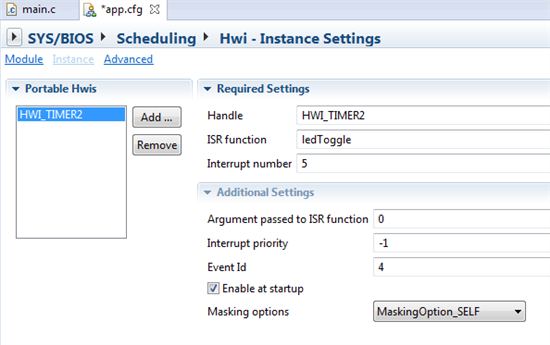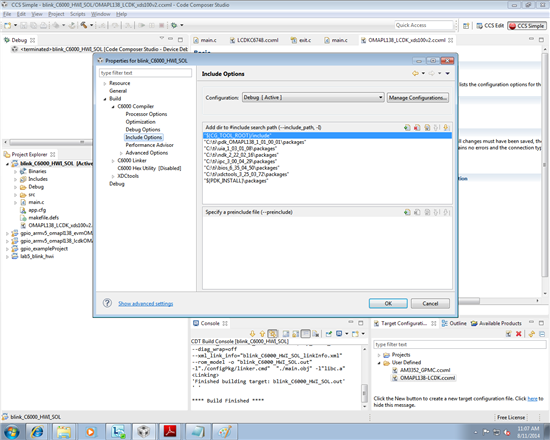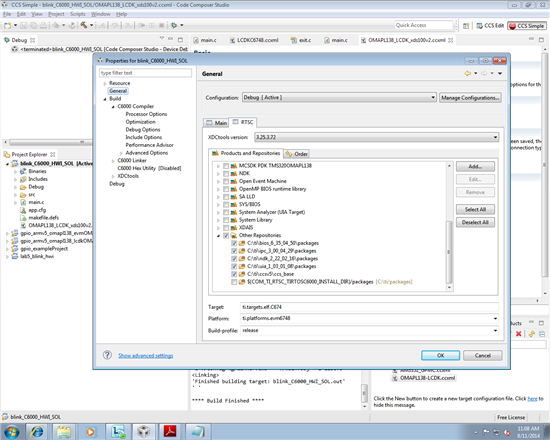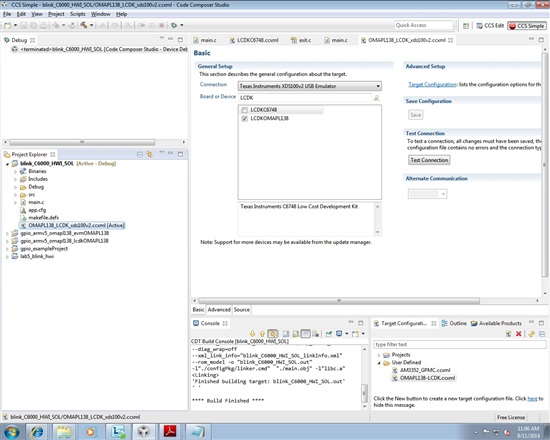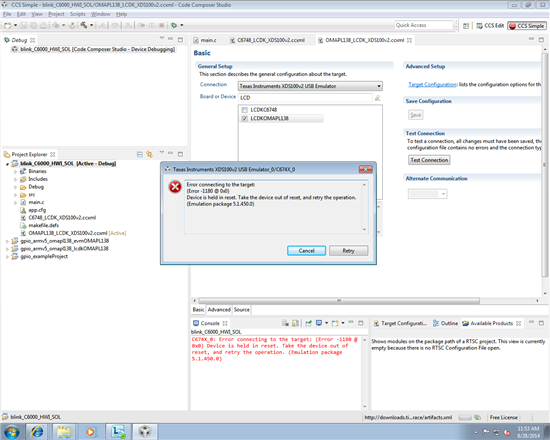I have been working through the Kernal Workshop for the TI-RTOS to get up to speed on working with the OMAP L-138 processor. In lab 5 I am supposed to initiat a LED to blink based on a HWI on timer 0 3/4. The first thing I noticed is that the lab calls for there to be a InitCpuTimers() function call. I do not see this in the C6000 main.c file but I do see a lot of code that would be setting up the timers in the hardware_init() function. I am not sure if the file I have is missing something or not. I have been setting up the HWI interrupt as such:
When I use this configuration I get no output on the LED. The interesting thing is that if I change the event ID to 4 (Timer0 1/2) system tick I then get a nice 500hz square wave signal.
As a result it seems like the HWI is setup mostly correctly but there is just something missing. I don't know if the timer is just not fully configured or if I am missing something more fundamental here. Any advice would help here.
Config
TI-RTOS for C6000 2.0.1.23
UIA: 2.0.0.28
CCS: 6.0.0.00190
HW: OMAPL138 LCDK
JTAG: XDS100v2 USB Emulator



